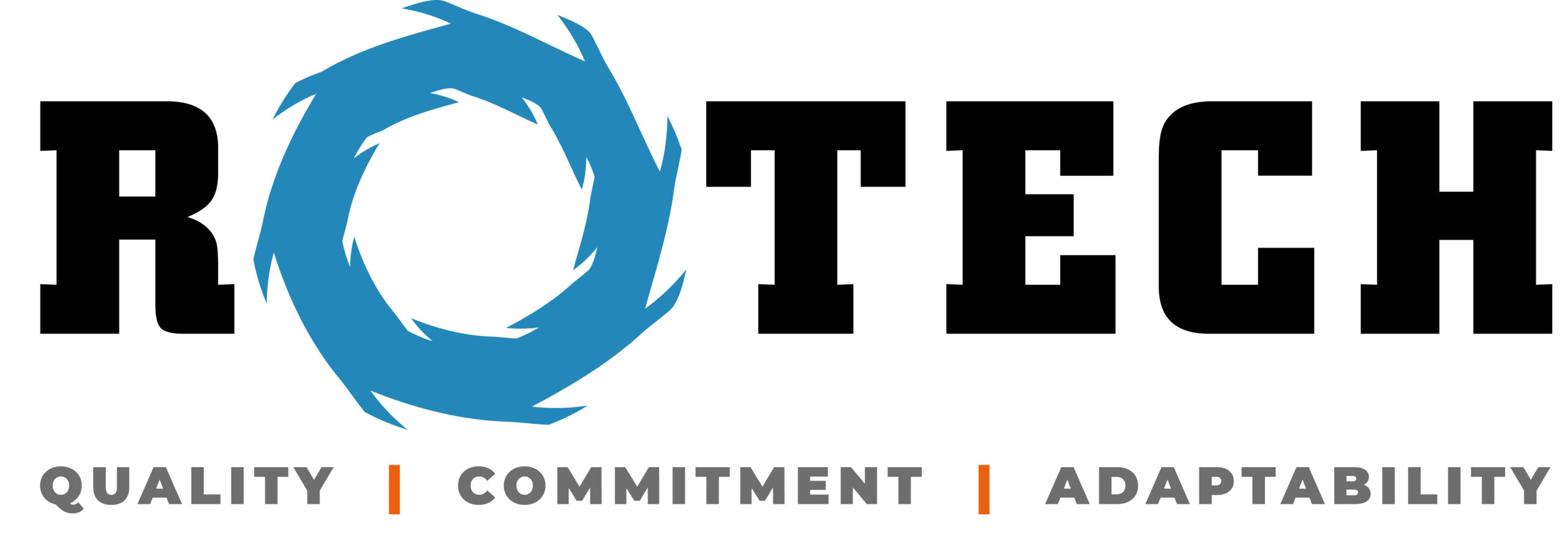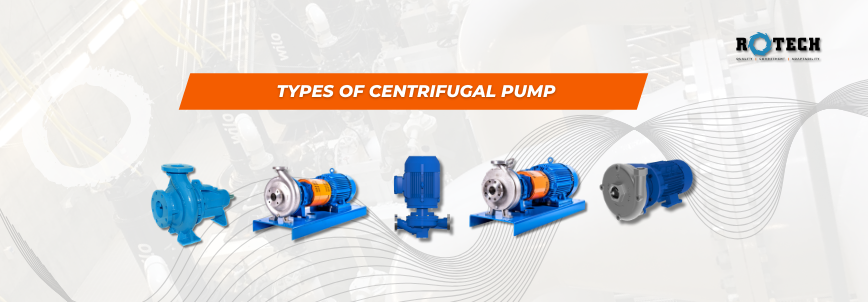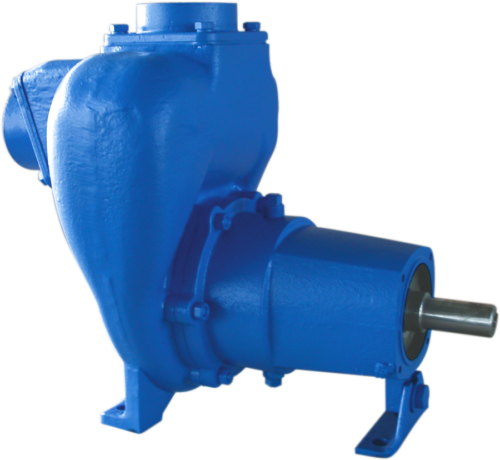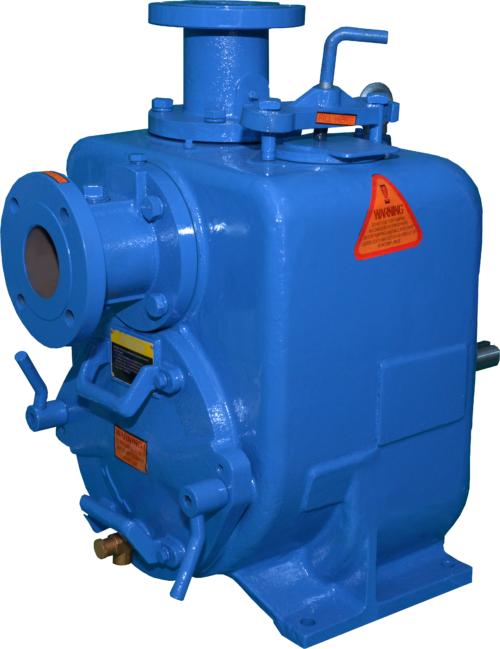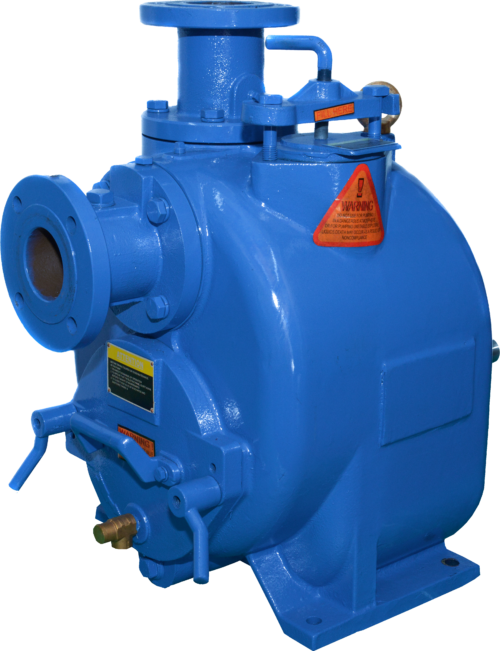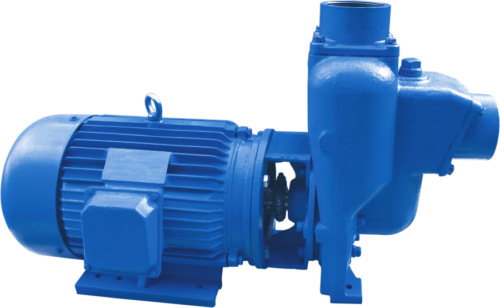A centrifugal pump is a mechanical device that utilizes the power of rotation to transfer fluids by converting rotational energy into hydrodynamic energy. This conversion process involves creating a flow and elevating the fluid’s pressure, enabling efficient fluid transfer.
Importance and applications of centrifugal pumps
- Centrifugal pumps are widely used in various industries and applications, including water supply, wastewater treatment, oil and gas, chemical processing, power generation, HVAC (Heating, Ventilation, and Air Conditioning), and many more.
- They are essential for circulating, transferring, and boosting liquids, handling both clean and dirty fluids efficiently.
- Centrifugal pumps play a crucial role in maintaining industrial processes, ensuring proper fluid circulation, and enabling the efficient operation of systems.
Overview of pump types and configurations
- Centrifugal pumps are available in different types and configurations to meet diverse requirements.
- The primary types of centrifugal pumps include single-stage, multi-stage, axial flow, radial flow, mixed flow, self-priming, and submersible pumps.
- Each type has unique characteristics, construction, and operating principles, making them suitable for specific applications.
Understanding the different types of centrifugal pumps can help in selecting the most appropriate pump for specific needs. Here is an overview of the primary types of centrifugal pumps and their characteristics:
Single-stage Centrifugal Pumps
- Single-stage centrifugal pumps have only one impeller and are designed to handle low to moderate-pressure applications.
- The working principle involves the conversion of rotational energy into kinetic energy by the impeller, which then increases the fluid’s velocity and pressure.
Construction and components
- Components of a single-stage centrifugal pump include the impeller, casing, volute, shaft, bearings, and mechanical seals.
- The impeller rotates within the casing and imparts centrifugal force to the fluid.
- The volute collects and diffuses the fluid after passing through the impeller, converting the kinetic energy into pressure.
Advantages and limitations
- Advantages:
- Simplicity in design and operation
- Cost-effective for low to moderate-pressure applications
- Suitable for handling clean and slightly contaminated fluids
- Limitations:
- Limited head (pressure) generation capabilities compared to multi-stage pumps
- Less efficient in handling high-viscosity fluids
- Not suitable for applications requiring high-pressure or high-flow rates
Common applications
- Water supply systems
- Irrigation systems
- Circulation in HVAC systems
- Boiler feed systems
- Drainage systems
Multi-stage Centrifugal Pumps
- Multi-stage centrifugal pumps consist of multiple impellers arranged in series to generate higher pressures.
- Each impeller imparts additional energy to the fluid, resulting in a cumulative pressure increase.
Construction and components
- Components of a multi-stage centrifugal pump are similar to single-stage pumps but with multiple impellers.
- The impellers are arranged on a common shaft, and each impeller is housed in a separate stage.
- The fluid passes through each stage, with pressure increasing incrementally.
Advantages and limitations
- Advantages:
- Ability to generate higher pressures for high-pressure applications
- Suitable for handling fluids with higher viscosities
- Increased efficiency compared to single-stage pumps at higher pressures
- Limitations:
- Higher initial cost compared to single-stage pumps
- More complex design and maintenance requirements
- Limited to applications requiring high pressures or high heads
Common applications
- Boiler feed systems
- Water treatment plants
- Oil refineries
- High-pressure industrial processes
Axial Flow Centrifugal Pumps
- Axial flow centrifugal pumps are designed to move fluid parallel to the pump shaft.
- The impeller pushes the fluid in a direction parallel to the shaft axis, creating a flow pattern similar to a propeller.
Construction and components
- Axial flow pumps consist of an impeller with curved blades enclosed in a casing.
- The impeller blades generate axial thrust that propels the fluid along the shaft axis.
- The casing is designed to facilitate the flow pattern and minimize energy losses.
Advantages and limitations
- Advantages:
- High flow rates with low head requirements
- Efficient for moving large volumes of fluid
- Suitable for applications with limited space or low-pressure requirements
- Limitations:
- Limited ability to generate high pressures
- Less efficient for high-head applications
- Reduced efficiency at low flow rates
Common applications
- Irrigation systems
- Flood control
- Cooling water circulation in power plants
- Stormwater drainage systems
Radial Flow Centrifugal Pumps
- Radial flow centrifugal pumps move fluid radially outward from the center of the impeller.
- The fluid enters the impeller axially and is forced outward by centrifugal force.
Construction and components
- Radial flow pumps consist of an impeller with curved blades and a volute casing.
- The impeller imparts centrifugal force to the fluid, pushing it towards the casing’s periphery.
- The volute casing collects the fluid and converts the kinetic energy into pressure.
Advantages and limitations
- Advantages:
- Suitable for handling fluids with moderate viscosity
- Wide range of flow rates and pressures
- Efficient for applications with medium to high heads
- Limitations:
- Less efficient for low-flow applications
- Susceptible to clogging when handling fluids with solids
- Not suitable for applications requiring very high pressures
Common applications
- Industrial process circulation
- Water treatment plants
- Chemical processing
- Heating and cooling systems
Mixed Flow Centrifugal Pumps
- Mixed flow centrifugal pumps combine features of both radial flow and axial flow pumps.
- The impeller imparts both radial and axial thrust, resulting in a mixed flow pattern.
Construction and components
- Mixed flow pumps have a hybrid impeller design that combines radial and axial flow characteristics.
- The impeller pushes the fluid outward radially and simultaneously propels it along the shaft axis.
- The casing is designed to accommodate the mixed flow pattern and optimize efficiency.
Advantages and limitations
- Advantages:
- Efficient for applications requiring moderate to high flow rates and heads
- Suitable for handling clean and slightly contaminated fluids
- Compact design compared to axial flow pumps for similar flow rates
- Limitations:
- Limited ability to handle high-viscosity or abrasive fluids
- Less efficient at very high or very low flow rates
- Higher initial cost compared to radial or axial flow pumps
Common applications
- Flood control
- Irrigation systems
- Water treatment plants
- Cooling water circulation in power plants
Self-priming Centrifugal Pumps
- Self-priming centrifugal pumps are designed to automatically remove air or gases from the suction line and prime themselves without external assistance.
- They have a built-in mechanism that facilitates the evacuation of air and allows the pump to start and operate without manual priming.
Construction and components
- Self-priming pumps have additional components such as a priming chamber, check valve, and air separation device.
- The priming chamber allows the air to separate from the fluid, and the check valve prevents backflow.
- The air separation device expels the air from the pump during operation.
Advantages and limitations
- Advantages:
- Eliminates the need for manual priming
- Suitable for applications with suction lift or intermittent operation
- Prevents damage to the pump and system due to dry running
- Limitations:
- Lower efficiency compared to non-self-priming pumps
- Limited to low to moderate flow rates and heads
- More complex design and maintenance requirements
Common applications
- Irrigation systems
- Drainage systems
- Marine applications
- Construction dewatering
Submersible Centrifugal Pumps
- Submersible centrifugal pumps are designed to operate submerged in the fluid they are pumping.
- They are sealed units with a hermetically sealed electric motor and pump assembly.
Construction and components
- Submersible pumps consist of a motor, pump, impeller, and discharge pipe.
- The motor is sealed and waterproof, allowing it to operate underwater.
- The pump assembly is designed to efficiently move fluid and generate the desired flow and pressure.
Advantages and limitations
- Advantages:
- Can be directly submerged in the fluid, eliminating the need for priming
- Suitable for applications with limited space or submerged conditions
- Efficient for pumping large volumes at low to moderate heads
- Limitations:
- Limited to applications with a maximum depth limitation for submersion
- Requires proper sealing and maintenance to prevent motor damage
- Higher initial cost compared to non-submersible pumps
Common applications
- Drainage in basements or construction sites
- Sewage and wastewater treatment
- Well water extraction
- Deepwater pumping
Conclusion:
Summary of centrifugal pump types
- Centrifugal pumps encompass a wide range of types, including single-stage, multi-stage, axial flow, radial flow, mixed flow, self-priming, and submersible pumps.
- Each type has its unique characteristics and applications, catering to specific flow rates, pressure, and operational requirements.
Factors to consider when selecting a centrifugal pump
- Flow rate and head requirements
- Fluid properties, including viscosity and temperature
- System pressure requirements
- Space limitations and installation conditions
- Maintenance and operational considerations
Importance of proper maintenance and operation
- Regular maintenance, including inspection, lubrication, and cleaning, ensures optimal pump performance and extends its lifespan.
- Proper operation, including monitoring performance, avoiding dry running, and addressing any issues promptly, enhances efficiency and prevents damage to the pump and system.
By understanding the various types of centrifugal pumps and their applications, you can make informed decisions when selecting a pump for your specific needs.

